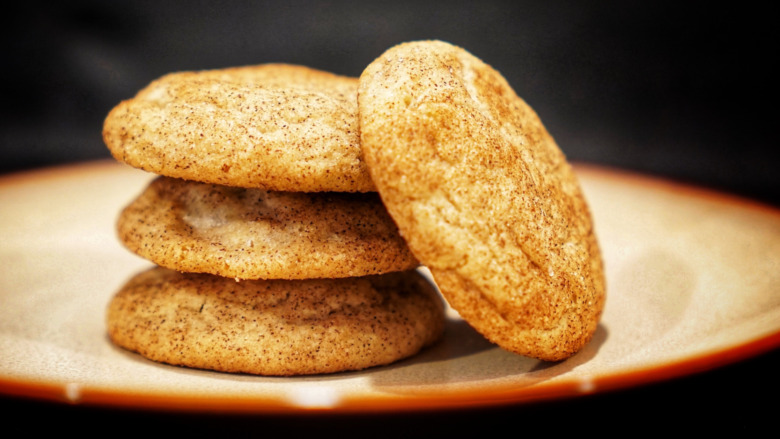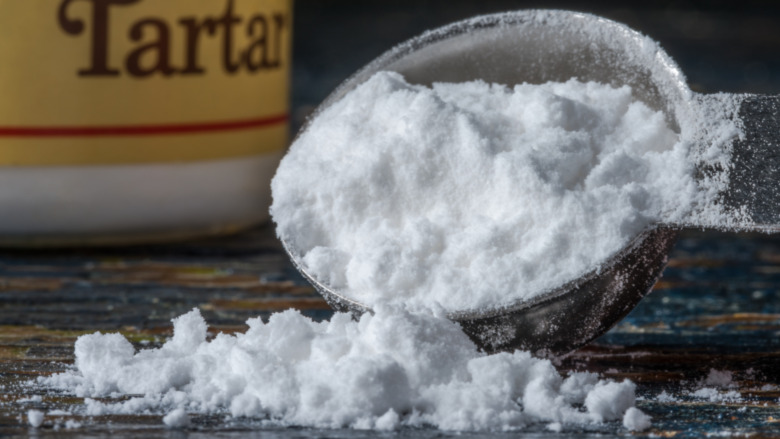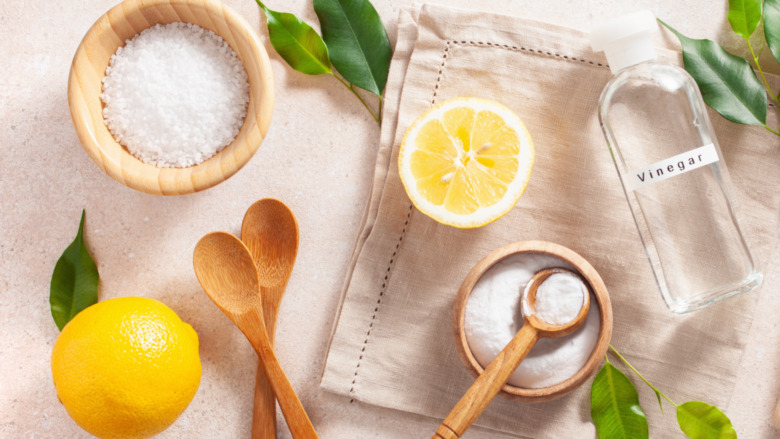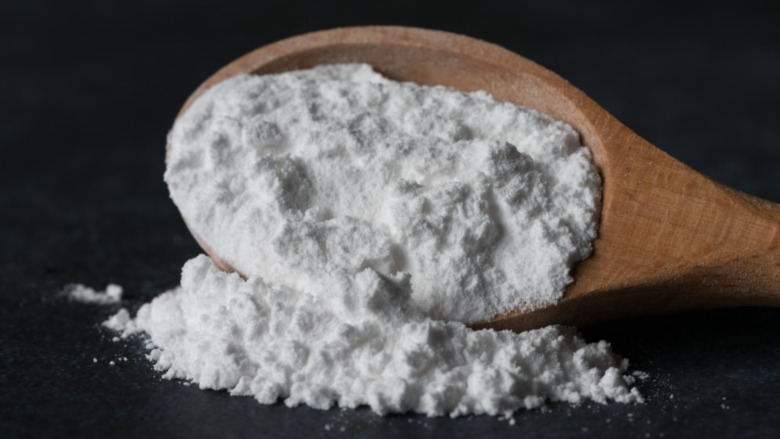The Ingredient You Probably Didn't Know Is In Snickerdoodles
Who doesn't love snickerdoodle cookies? These chewy morsels of cinnamon and sugar deliciousness can usually be found around the holiday season. Unlike a fruitcake, it's the gift that people actually want — and are secretly hoping to receive. But it turns out that snickerdoodles are not just popular Christmas cookies anymore. If Google is any indication, and it surely is when it comes to what people are searching for, snickerdoodles are some of the most searched for recipes on the internet in recent years, coming in at number ten for 2018 (via Us Weekly) and number five for 2019 (via SheKnows).
If you're one of the legions of people looking up recipes for snickerdoodles on Google, then you probably already know that one surprising and secret ingredient on the list — the one that separates the oh-so-soft and chewy snickerdoodles from plain old crispy-and-crunchy sugar cookies with a bit of extra cinnamon: cream of tartar. Say what? Yes, cream of tartar. No, cream of tartar has absolutely nothing to do with tartar sauce. And yes, there's a very good reason it's in the recipe for snickerdoodles.
What is cream of tartar and why is it in snickerdoodles?
Despite its name, cream of tartar is not a cream at all. Rather, it's a dry, white powder that's a result of the winemaking process, according to Akron Beacon Journal. Cream of tartar is most often used in baking and it serves three specific purposes. It adds stability to egg whites and helps them keep their shape, even at high temperatures in the oven (via My Great Recipes), making them perfect for meringues and soufflés. Cream of tartar also prevents sugar crystals from forming, which is useful for smooth icings, frostings, and a chewy cookie texture. Cream of tartar also acts as a leavening (read, fluffy) agent by causing dough to rise without the use of yeast, which you wouldn't really want in your cookies, explains Wide Open Eats.
So that distinctive soft and chewy snickerdoodle texture? You have cream of tartar to thank for that. As Allrecipes reports, cream of tartar prevents the sugar in the cookie dough from "crystalizing into crunchiness" while its acidic content also gives snickerdoodles their distinctive tangy taste.
What can you substitute for cream of tartar?
What if you don't have any cream of tartar the next time you're baking cookies, especially snickerdoodles? Luckily, there are some simple substitutions you can make in a baking emergency. The easiest is to replace both the baking soda and cream of tartar in the recipe with baking powder, which is actually a combination of baking soda and tartaric acid, or cream of tartar (via SPICEography).
Another option is to use lemon juice or vinegar to replace cream of tartar. Taste of Home recommends using a full teaspoon of lemon juice or white vinegar for every half teaspoon of cream of tartar. This will provide the same kind of acidity, and prevent creating a dreaded batch of deflated cookies. It's not, however, recommended to use vinegar as a substitution in some baked goods (like cakes) as it could affect both the texture and taste (via Healthline).
You can also use buttermilk and yogurt to replace cream of tartar. Both contain a bit of acid and will work particularly well as a replacement in baked goods. The key is to remove some liquid from the recipe to account for the buttermilk or yogurt. According to Healthline, for every ¼ teaspoon of cream of tartar, remove ½ cup of liquid and replace with buttermilk. If using yogurt, thin it out with some milk first to reach the consistency of buttermilk and then replace cream of tartar at the same proportion as buttermilk.
What else does cream of tartar do?
Besides being a great ingredient to have on hand for making all sorts of tasty desserts, from baking the chewiest cookies and the fluffiest cakes to making the creamiest and smoothest frostings and candies, cream of tartar also has some other useful cooking and non-cooking uses (via Eat This, Not That!). Want to keep your vegetables from losing their bright and pretty colors while boiling? Add a pinch of cream of tartar. Have aluminum or metal pots and pans that are looking a little dull and rusty? Combine cream of tartar with some hydrogen peroxide to form a paste to scrub with. You can also buff stainless steel with a wet cloth and a little bit of cream of tartar.
Cream of tartar also lasts practically forever when stored properly, away from moisture (via Go Bad or Not?). So you may just want to pick some up the next time you're in the spice aisle. You never know when that cream of tartar might come in handy!



